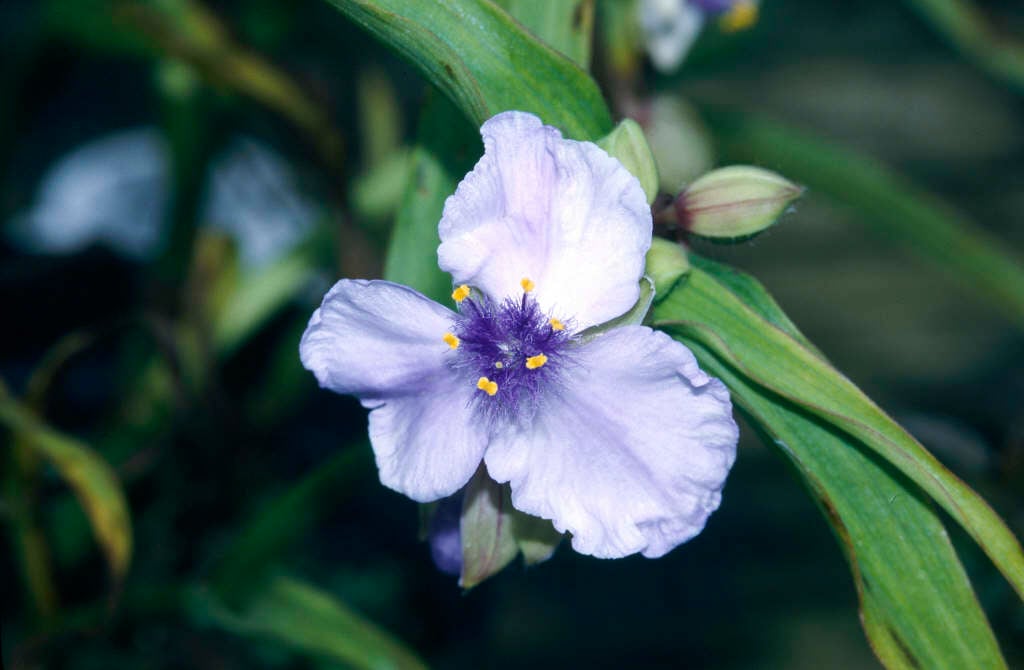Tradescantia (Andersoniana Group) 'Osprey'
spider lily 'Osprey'
A clump-forming, densely leafy perennial to 60cm, with narrow-lanceolate leaves and small clusters of blue-eyed white flowers 3-4cm across
Synonyms
Tradescantia virginiana 'Osprey'Tradescantia 'Osprey'
see moreTradescantia × andersoniana 'Osprey'
Size
Ultimate height
0.5–1 metresTime to ultimate height
2–5 yearsUltimate spread
0.1–0.5 metresGrowing conditions
Moisture
Moist but well–drainedpH
Acid, Alkaline, NeutralColour & scent
| Stem | Flower | Foliage | Fruit | |
| Spring | Green | |||
|---|---|---|---|---|
| Summer | Blue White | Green | ||
| Autumn | Blue White | Green | ||
| Winter | Green |
Position
- Full sun
- Partial shade
Aspect
South–facing or East–facing or West–facing
Exposure
Exposed or Sheltered Hardiness
H6Botanical details
- Family
- Commelinaceae
- Native to GB / Ireland
- No
- Foliage
- Evergreen
- Habit
- Tufted
- Potentially harmful
- Skin allergen. Wear gloves and other protective equipment when handling
- Genus
Tradescantia can be trailing or tufted perennials with usually fleshy, evergreen foliage and distinctive, 3-petalled flowers
- Name status
Accepted
How to grow
Cultivation
Thrives in fertile, moist but well-drained soil. Flower production is better in full sun, but light afternoon shade is beneficial in areas with hot summers. Plants may need support, see staking: perennials
Propagation
Propagate by division in spring or autumn
Suggested planting locations and garden types
- Flower borders and beds
Pruning
After flowering cut back flowered stems to prevent seeding and to encourage further flowers
Pests
May be susceptible to aphids, vine weevil, slugs and snails
Diseases
May be susceptible to fungal leaf spot and a rust
Love gardening
Sign up to receive regular gardening tips, inspiration, offers and more
View our Privacy Policy
Get involved
The Royal Horticultural Society is the UK’s leading gardening charity. We aim to enrich everyone’s life through plants, and make the UK a greener and more beautiful place.

